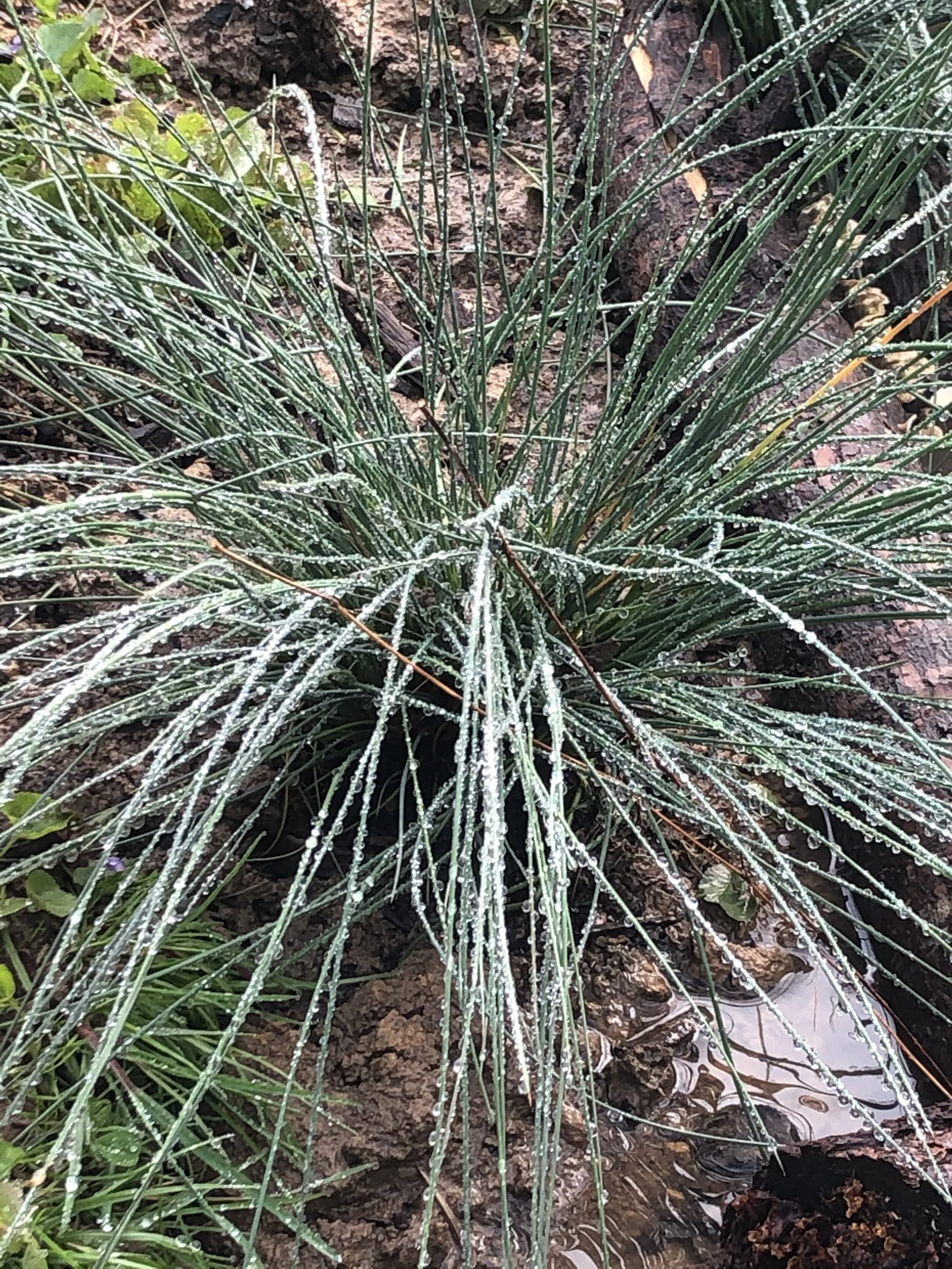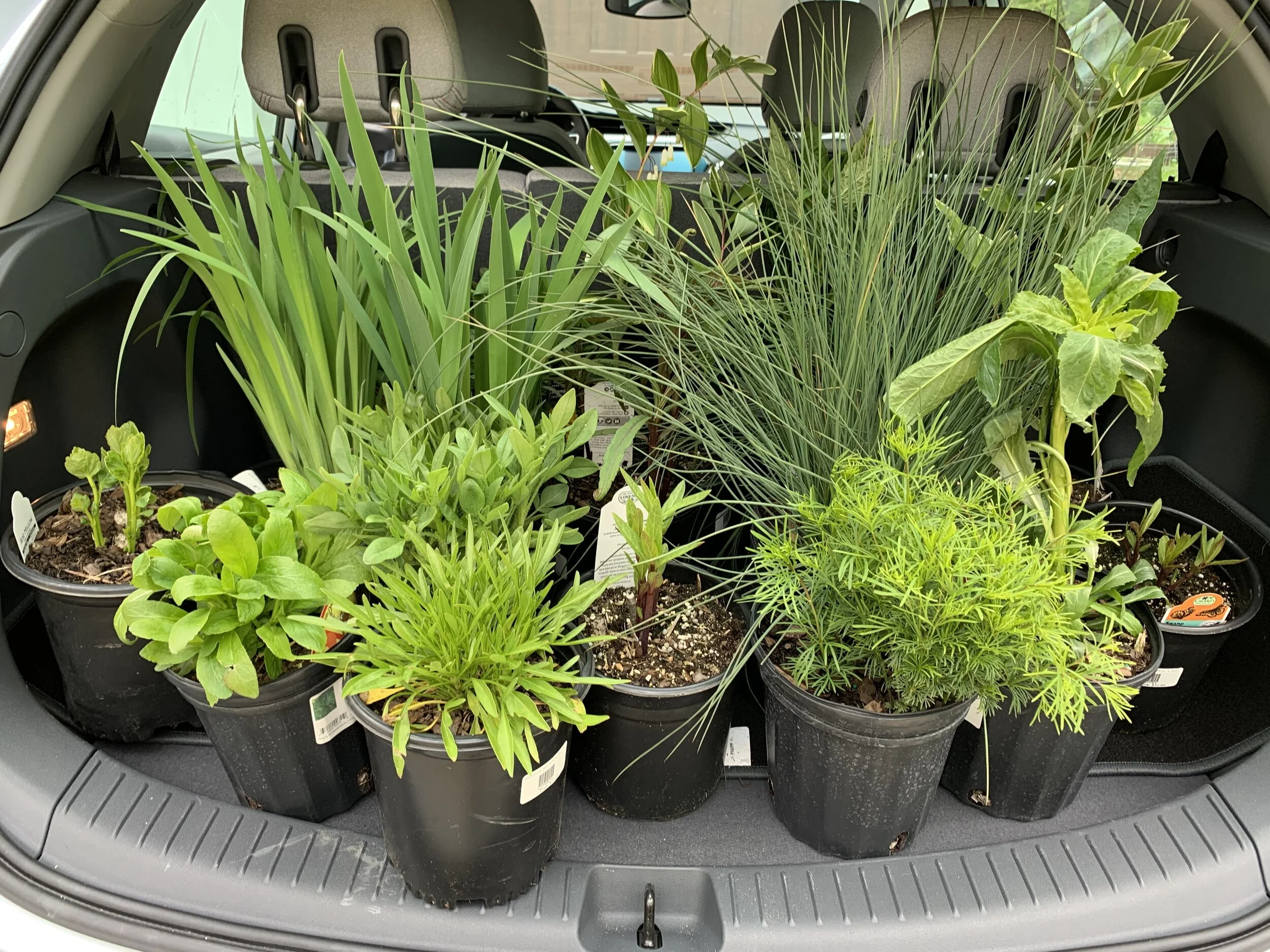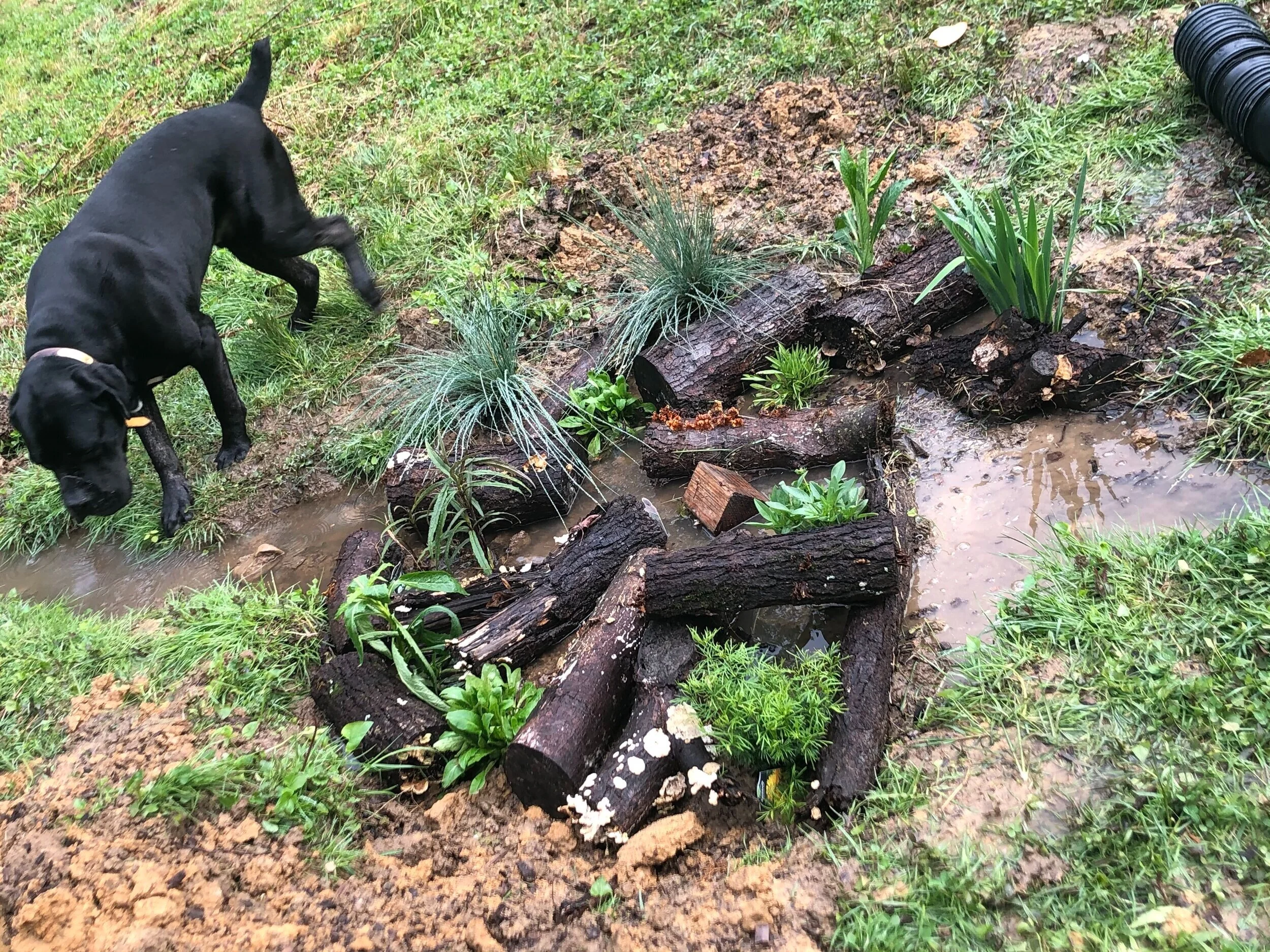Orchard Rain Garden Setup








What is a rain garden?
According to the EPA, “A rain garden is a depressed area in the landscape that collects rain water from a roof, driveway or street and allows it to soak into the ground. Planted with grasses and flowering perennials, rain gardens can be a cost effective and beautiful way to reduce runoff from your property.”
In addition to slowing down runoff, rain gardens can help prevent flooding - the deep rooted plants in rain gardens can absorb more water than traditional grass lawns. Hopefully, the rain gardens will help the swales to reduce the swampiness in the orchard!
Choosing Plants
I wanted to go for mostly native plants in our rain gardens. Native plants are often good choices because they are well-adapted to the local area and they useful for supporting local pollinators like hummingbirds, butterflies, and bees.
The “Rainscapes” guide from Montgomery County also adds, “native plants have deep root systems that are much bigger than the root depth of conventional turf grass. Typical turf grass typically has roots that are 2-4 inches deep. Rain garden plant roots will usually grow to the depth of the garden and may extend further, depending on local soil conditions. As the plant matures, plants grow new roots looking for water and nutrients and discard about 30 percent of the roots annually, leaving “root channels” or holes in the soil where old roots decayed, which break up the soil. Water flows through the “root channels” and soaks into the soil more quickly. Drainage through soil will improve over time with native plants.”
We might need a bigger trunk…
Besides wanting native plants, we also needed plants that were okay with wet soil conditions and regular flooding and standing water.
We popped over to Patuxent Nursery in Bowie and walked around their very large native plant collection (and maybe a few others fell in the cart as well…)
Prepping the area
I put some sand in the bottom of the dug-out areas to help water drain from our very clay-y soil, and then dumped some mulch on top. The chickens were kind enough to help me spread it!
The most fun part!
After that , the only thing left to do was stick the plants into the ground!
I made same vague attempts to think about complementary colors and heights
We got to test it that very night! We had some light rainfall overnight that filled up the three rain gardens and ran into the pond-to-be area. It took about 2 days for it all to dry it, and all the plants looked very happy for it.
So far, so good! Stay tuned for some lovely flowers come summer…










